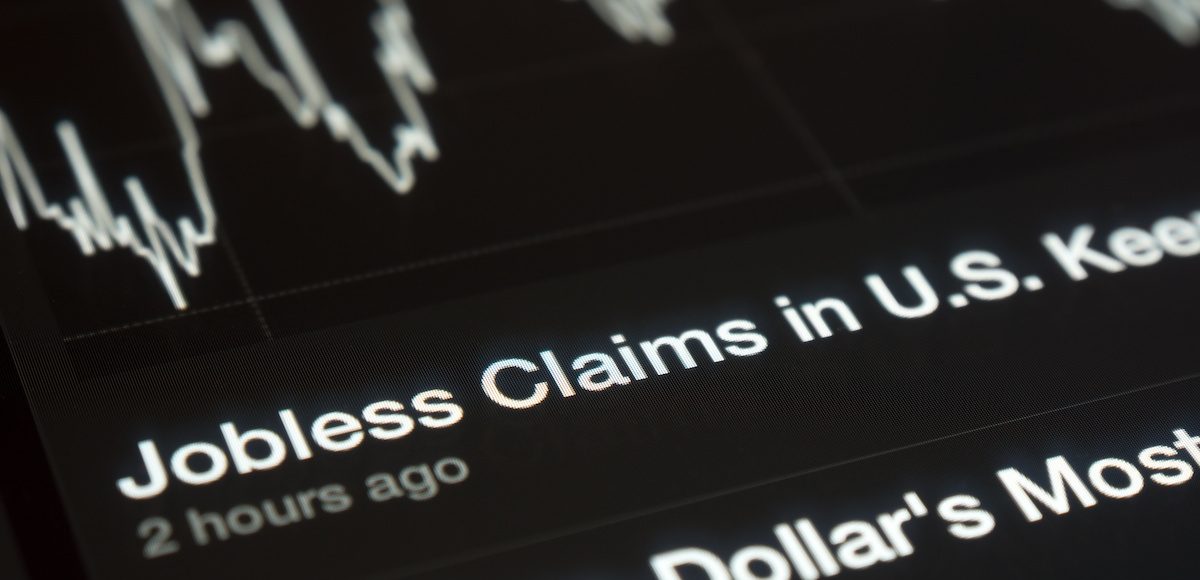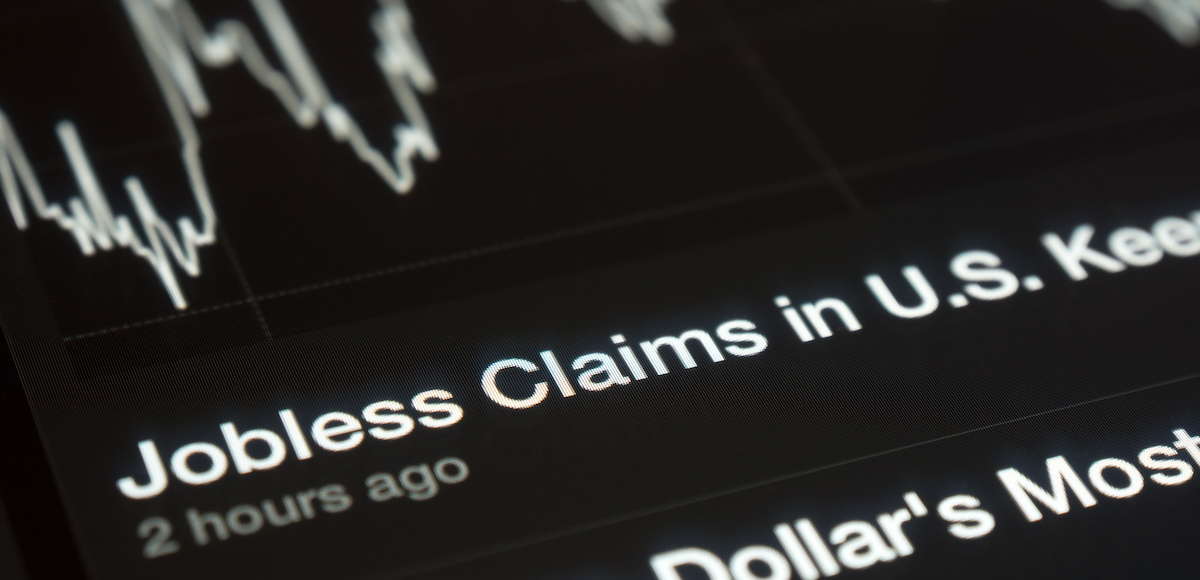

U.S. jobless claims graph on a tablet screen.
The advance figure for seasonally-adjusted initial jobless claims came in at just 213,000 for the week ending August 4, beating the forecast. That’s a decrease of 6,000 from the previous week’s upwardly (+1,000) revised level at 219,000.
The 4-week moving average — which can iron-out volatility — came in at 214,250, a decline of 500 from the previous week’s revised average. The previous week’s average was revised up by 250 from 214,500 to 214,750.
In lagging data, the advance seasonally adjusted insured unemployment rate remained unchanged at a very low 1.2% for the week ending July 28. The advance number for seasonally adjusted insured unemployment during the week ending July 28 rose by 29,000 to 1,755,000.
The previous week’s level was also revised up 2,000 from 1,724,000 to 1,726,000.
The 4-week moving average rose by 3,000 to 1,745,250, while the previous week’s average was revised up by 500 from 1,741,750 to 1,742,250. The unadjusted insured unemployment rate was also 1.2%. A year earlier the rate was 1.4 percent and the volume was 1,920,454
No state was triggered “on” the Extended Benefits program during the week ending July 21.
The highest insured unemployment rates in the week ending July 21 were in New Jersey (2.5), Connecticut (2.2), Puerto Rico (2.2), Pennsylvania (2.0), Alaska (1.9), Rhode Island (1.9), California (1.8), the Virgin Islands (1.7), Illinois (1.6), District of Columbia (1.5), Massachusetts (1.5), and New York (1.5).
The largest increases in initial claims for the week ending July 28 were in Iowa (+876), Maryland (+410), Oregon (+155), Indiana (+107), and Rhode Island (+86), while the largest decreases were in Michigan (-5,997), California (-3,046), Missouri (-2,258), Georgia (-1,598), and South Carolina (-1,598).





